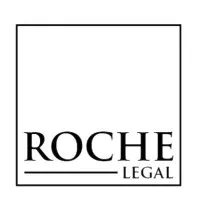- within Litigation, Mediation & Arbitration and Privacy topic(s)
- with Inhouse Counsel
- in Asia
- with readers working within the Transport, Law Firm and Construction & Engineering industries
The importance of preserving evidence in personal injury cases cannot be overstated. In these types of cases, evidence plays a crucial role in determining who is at fault and how much compensation the injured party is entitled to. Without proper evidence, it can be difficult, if not impossible, to prove liability and secure fair compensation.
When a personal injury occurs, it is important to collect and preserve any and all evidence related to the incident. This can include photos of the accident scene, witness statements, medical records, and any other relevant information. This evidence can help to establish the facts of the case and provide a clear picture of what happened.
One of the key pieces of evidence in personal injury cases is the accident or incident report. This document (which is typically prepared by the police following a motor vehicle accident, or your employer following a work accident) provides detailed information about the circumstances of the accident. It can include information about the time and place of the accident, the parties involved, and any contributing factors. The incident report can be used to confirm the event actually occurred, establish liability and help determine fault. For this reason, it is important to report the incident and injury as soon as reasonably possible.
Another important piece of evidence in personal injury cases is eye witness testimony. Eyewitness accounts can provide valuable information about the events leading up to and immediately following the accident. These witnesses can help to establish the sequence of events and provide insight into what happened.
Medical records are also crucial pieces of evidence in personal injury cases. These records can provide detailed information about the injuries sustained in the accident and the treatment that was received. This information can be used to determine the extent of the injuries and the amount of compensation that the injured party is entitled to.
In addition to the above, there are many other types of evidence that can be used in personal injury cases. For example, surveillance footage of the accident scene (CCTV), dash-cam footage, expert witness testimony, and other types of physical evidence can all be used to support the injured party's case.
It is important to preserve all relevant evidence as soon as possible after a personal injury occurs. This evidence can help to establish the facts of the case and provide a clear picture of what happened. The more time that goes on after the incident, the harder it is to obtain evidence. Without proper evidence, it can be difficult, if not impossible, to prove liability and secure fair compensation. For these reasons, preserving evidence is crucial in personal injury cases.

